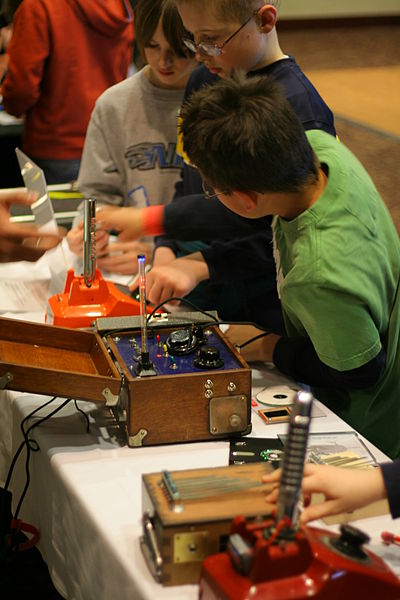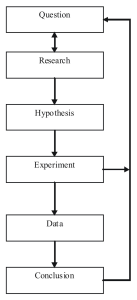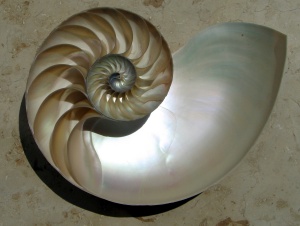The Scientific Method On Its Way Out

Science as a Practice
As a curriculum developer my nose is constantly buried in science education standards, notably the Next Generation Science Standards (NGSS) which are slowly being adopted across the country. As I've been delving into these standards and other literature about teaching pedagogy ( which is the method or practice of teaching), I've noticed a clear shift away from the scientific method. If you're like me, then growing up the scientific method was the bread-and butter of your science classrooms, and you were taught to memorize the steps of the scientific method:
- Make an observation
- Ask a question
- Conduct background research
- Form a hypothesis
- Design an experiment
- Conduct your experiment and collect data
- Analyze data
- Draw conclusions
- Communicate and share your data
This is still commonly taught in schools. However, with the advent of NGSS and inquiry based learning many educators are leaning away from the rigid method that was once taught, and focusing more on the application and practice of science in all of its messiness.

A "method" is an orderly set of steps and the fact is, science is not always orderly. A "method" does not require students to apply their ideas about science or to demonstrate their science skills, they're told how to do things. This is why NGSS is moving away from the scientific method and towards the practice of science.
Science as a practice emphasizes the idea that scientific investigation requires that students apply ideas and knowledge rather than just following a step-by-step method. This also implies that carrying out investigations may require "practice" and multiple attempts at one's project or study. Research has shown that this practice is how students learn best.
There are eight science practices laid out in the NGSS (you can find the NGSS practices here):
- Asking questions (for science) and defining problems (for engineering)
- Developing useful models
- Planning and carrying out investigations
- Analyzing and interpreting data
- Using mathematics and computations thinking
- Constructing explanations (for science) and designing solutions (engineering)
- Engaging in argument from evidence
- Obtaining, evaluating, and communicating information
Even though these practices are given numbers they are not expected to be followed in a rigid sequence. Students are expected to understand that the process of science isn't always step-by step. Traditionally the scientific method has been taught such that when kids got to the end of the scientific method they could circle back to the beginning and start over (this is why you commonly see flow charts of the scientific method). I think that this has been a dis-service to students and science.

The practices of science flow in a logical order but they allow students to engage in science in a way that is more like the behavior that scientists engage in, with room for flexibility in the steps. For example, while constructing an explanation for an experiment kids might realize that their analysis and interpretation of the data wasn't accurate, which may require re-thinking their mathematics and computation. Lack of rigid flow does not mean that the science of the practices are not rigorous, rather that they are even more rigorous because students must be able to apply their skills, analysis, and interpretation in the entire process, not just at one step. Practices also enhances long-term content retention because it requires application for carrying out science, presenting science, and receiving feedback.
I think it's a good thing that the scientific method is on its way out, and that more critical thinking is being taught and developed. The practices may seem squishy or less concrete than the steps of the scientific method, but the practices more closely model how scientists think and conduct science research.
I've only scratched the surface of NGSS in this article, because the science practices are one of three supporting dimensions of the standards (practices, disciplinary core ideas/content, and cross cutting concepts). If you'd like to know more here are some great resources:
- Explore all about NGSS on the NGSS website.
- NGSS Appendix F, all about the practices.
- NGSS Practice Poster.
- The three dimensions of NGSS.

A BIT OF PHILOSOPHY FOR THE BRAVE OF HEART
If you've made it this far I'll give you fair warning, in college I worked in tandem on a philosophy and environmental science degree. Ultimately I took the BS in science because I felt it had more potential for future jobs than a BA in philosophy. However, I haven't lost my penchant for blending science and philosophy. I wanted to present here an idea related to the study of consciousness and the practice of science.
As I mentioned earlier the scientific method is often presented as a flow chart, which is similar to how how the evolution of man is presented; from fish to mammal, to monkey, intelligent primate, and then to human. I like to think of science, and the development of the human mind/consciousness more like a three dimensional spiral, which is based on the works of Ken Wilbur.

Each level of the spiral is integrated and incorporated into the next; and each level is transcended but it includes the content from the inquiry or level below it. Every time a scientific study is conducted it builds on the knowledge of the scientists before (lower on the spiral). Each inquiry (including all the practices mentioned above) is conducted and synthesized, and once conclusions are drawn then hopefully another ring of the spiral is entered in, synthesizing and integrating information from the first level. Each stage of the spiral arises in response or reaction to the questions and problems before it. The interesting thing is that as each stage of the spiral forms scientists can see patterns, and how themes from earlier stages of the spiral are recapitulated or reemerge, but with even greater complexity.

You can think of the practices of science (and scientific knowledge) much like the spiral, or even a rainbow. When you see a rainbow in the sky you can see very clear and distinct colors but you can't say for sure where those colors start and stop because they blend into each other. Each color is unique and whole but those colors are formed in relationship with the other colors above and below them. This is like the practice of science. There are very clear stages of science/scientific knowledge/and human consciousness but each one exists on a spectrum and can't be clearly isolated.
Regardless of how you see the flow of science, the practice of science, and the development of scientific knowledge, it's all connected. What's your philosophy?

